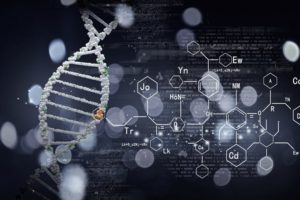Course Description
A) Atoms and molecules, intermolecular and intramolecular interactions, Stablizing interactions (Van der Waals, electrostatic, hydrogen bonding, hydrophobic interaction, etc.).Stablizing interactions (Van der Waals, electrostatic, hydrogen bonding, hydrophobic interaction, etc.).
B) Principles of biophysical chemistry (pH, buffer, reaction kinetics, thermodynamics, colligative properties).
C) Amino acids: Structure, classification and properties of amino acids. pKvalue and iso-electric point of amino acids, Peptide and peptide synthesis.
D) Proteins–structure and classification-primary structure of protein (e.g. Insulin). Secondary structure- Alpha helix, Collagen helix, Beta pleated sheet, Ramachandran angles and Ramachandran map.Fibrous proteins-examples (Keratin Collagen, Fibrous muscle proteins).Tertiary structure-Globular protein- e.g. Myoglobin. Quaternary structure e.g.Hemoglobin. Tissue protein in health and diseases, -collagen, structure and synthesis. DNA binding proteins-DNA regulatory proteins, folding motifs, finger motifs, Zipper motifs.
E) Thermodynamics Introduction-Concept of energy and laws of Thermodynamics. Matter and energy-Life as an anergy system-order, disorder, Entropy, Enthalpy.
F) Enzymes Classification- (I.U.B.system) co-enzymes, iso-enzymes, ribozyme.Enzyme specificity. Mechanism of action of enzymes. Formation of enzyme substrate complex. Various theories. Enzyme kinetics: Michaelis-Menten equation. Km value and its Enzyme velocity and factors influencing enzyme significance. Velocity. Enzyme inhibition- suicide inhibition and feedback inhibition.Enzyme regulation: Types of regulation, Allosteric regulations-Key enzymes, Covalent modification.
G) Methodology and working of microscopes Phase contrast microscope Fluorescent microscope, Electron microscopes – TEM and SEM..Environmental scanning electron microscope Centrifugation Ordinary, high speed centrifuge Density gradientcentrifugation.
H) Electrophoresis Principle Gelelectrophoresis – SDS PAGE, Immunoelectrophoresis- Principle and application
I) Column Chromatography: Column chromatography, HIC, Ion exchange chromatography, HPLC Affinity Chromatography.
J) Spectrometery: Mass spectrophotometer, Infrared spectrophotometry, FTIR, NMR and EMR spectrophotometry, Different types of Mass spectrometry and surface plasma resonance methods.
K) Protein sequencing methods, detection of post translation modification of proteins, Molecular analysis using UV/ visible light, fluorescence, Circular Dichroism Xray crystallography.
Who This Course is for
Course is specifically designed for Degree and PG Biosciences students who want to have an in-depth concept knowledge in Biochemistry and aspire to succeed in National and international competitive exams like CSIR, ICAR, ICMR, BARC, GRE, IIT-JAM, DBT, CUET Exams.

